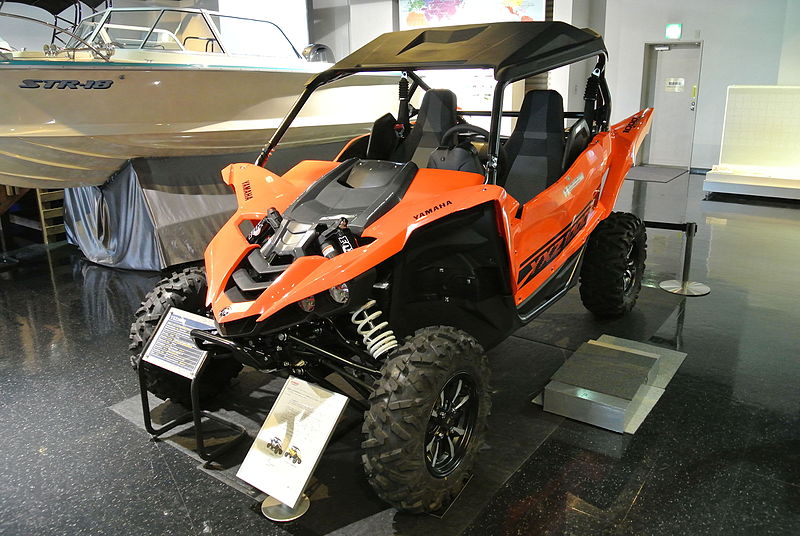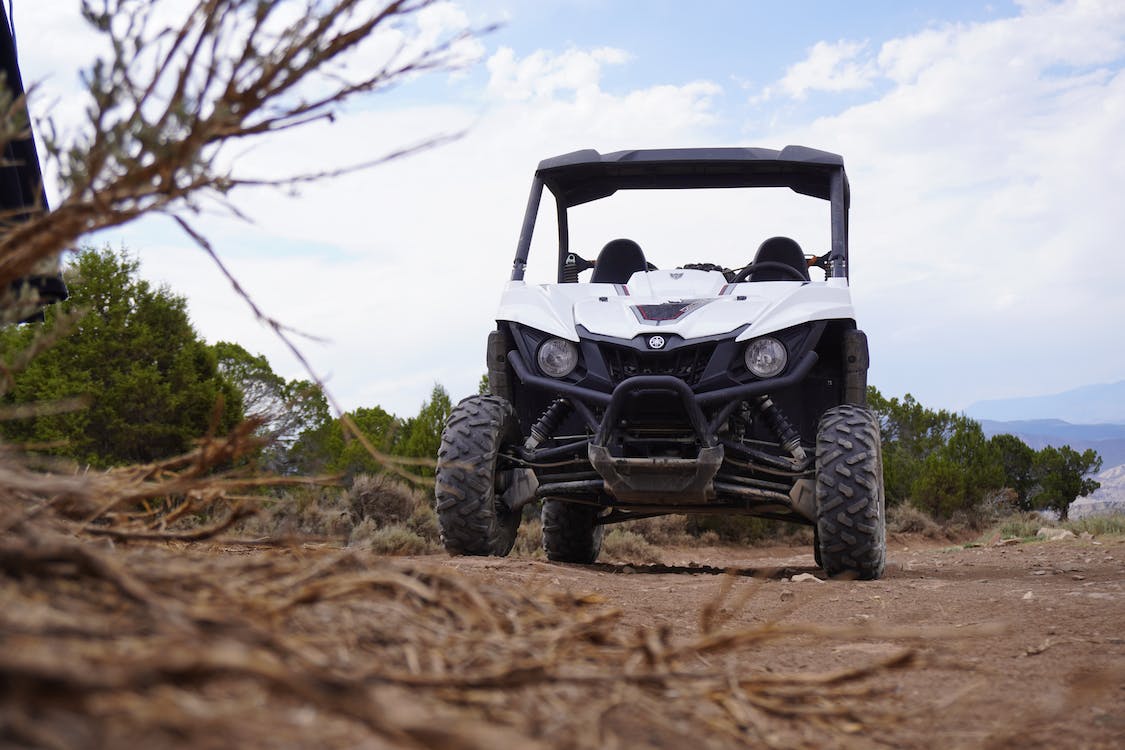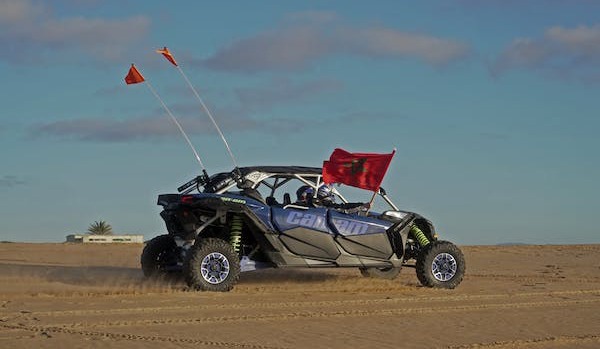What is side by side vehicle (SXS)?
A four to six-wheeled off-road vehicle with side-by-side bucket seats—hence its name—and a steering wheel similar to one seen in a car is known as a side-by-side vehicle (SxS). They are equipped with various car-like amenities including seatbelts, foot brake and gas pedals, and roll bars or cages. They are well-liked as off-road leisure vehicles because of their ruggedness. Still, many who live in rural regions or on farms, where carrying and towing are regular tasks, find they are also increasingly handy as work vehicles. You can get an SxS that can handle practically everything you throw at it thanks to a range of models and choices.
How It All Started
Since their introduction was gradual, it is difficult to pinpoint the exact time that side by side and UTVs entered the scene. It developed based on what had come before. We might argue that the utility vehicle’s evolution has been a protracted one. Jeeps, Dune Buggies, and ATVs all have some common ancestors that helped shape UTVs. Modern UTVs, however, are distinctive vehicles.
A brand-new off-road vehicle trend began to emerge in the 1990s. At this point, people began to realize how entertaining off-road vehicles might be. People found that these devices met their requirements in a variety of ways. The culture and use of UTVs increased throughout the following ten years.
Many individuals discovered how useful side-by-sides might be for off-road rides as new types and pricing came into the market. Within a few years, this trend expanded dramatically among outdoor enthusiasts who would utilize these cars for utility and fun.
Why Should You Consider an SXS?
A Side by sides vehicle occupies a convenient middle ground between an ordinary ATV and a large vehicle like a truck. A SxS is equally as swift and agile as an ATV but has far more capacity, power, and toughness than a typical truck. Without worrying about chipped paint, cracked glass, or damaged panels, they can face challenging days. These vehicles feature unmatched maneuverability in difficult off-road environments thanks to a reduced center of gravity.
Side by Side or ATV? What’s the Difference?
An off-road vehicle with straddle sitting and handlebar steering, similar to a motorcycle, is an all-terrain vehicle (ATV), often known as a four-wheeler or quad. Several two-person ATV versions are comfortable, although most are designed for a single rider. Instead of handlebars, SxSs or UTVs have steering wheels, gas, and brake pedals, and are built to accommodate more people—at least two and up to six—than conventional vehicles. SxSs can carry heavier loads than ATVs, making them a better choice for individuals who need to haul equipment around a ranch or farm.
Types of Side by Sides Vehicle
Sport Side by Side
For good reason, this is the SxS market’s fastest-growing sector. There are Can-Am Sport SxS variants equipped with strong engines for maximum horsepower, cutting-edge suspension systems, and superior traction systems that are built for every circumstance on your adventure menu.
Utility Side by Side
This workhorse category is where it all began with crucial characteristics like excellent towing capability, spacious cargo boxes for optimum storage space, and winches. These have greater payload and towing capacity and are made to work hard. Some can handle all kinds of extra equipment, from fully enclosed cabins with glass windows, heating, and air conditioning, to snowplows, and have 3-person wide bench seats in both the front and back to transport up to six people.
Recreational side-by-side
These vehicles are mostly used for family outings, trail riding, and hunting. Recreational SxSs offer plenty of ground clearance, which makes it easy to go through thick muck or rocky, uneven terrain. Ground clearance is essential for trail riding.
What to Take into Account When Buying a Side by Side
Although they have many parts, uses, and features in common, buying a side-by-side is a considerably different procedure than buying a regular automobile or truck. As a result, we have chosen to emphasize seven of the most important factors to take into account before making your purchase.
Engine
The engine of a model is crucial since it acts as the brain of a Side by Side. You should think about an engine’s size, layout (i.e., number of cylinders and arrangement), cooling system, and whether or not it is turbocharged, supercharged, or normally aspirated when examining this section. In more recent years, the industry has also begun to see hybrid, gas-electric, and full-electric powertrains.
Componentry
The running gear, which includes the frame, suspension, and braking systems, as well as other crucial components, makes up the majority of a Side by Side’s performance. It is crucial to think about the suspension parts’ brand, the configuration being utilized, and the performance specifications supplied in terms of travel and ground clearance while examining this area.
Performance Capabilities
UTVs and Side by sides must navigate a variety of hazards and difficulties that are prevalent on untamed terrain, in contrast to road-going vehicles. Because of this, whether buying a car for business or leisure, its performance capabilities become crucial. The horsepower and torque ratings (as well as gearing) of a UTV or SXS will directly affect the vehicle’s acceleration, peak speed, payload, and carrying capabilities. A model’s ability to go anyplace should also be evaluated in terms of its suspension travel, ride height, approach, break-over, and departure angles, even if it is mostly attributed to the vehicle’s chassis and suspension configuration.
Passenger & Cargo Space
The passenger and cargo space of side-by-sides may also greatly vary from model to model. This difference is particularly significant when choosing one of these vehicles for business use. This is because these machines may range from single-passenger vehicles with hardly any cage space to versions with seats for six people and capacity for all of their stuff. It is also important to note that the majority of these cars may expand their overall storage capacity by adding outside load racks.
Crash Protection
Crash protection is important because side-by-side must be able to resist a lot of punishment because they are designed to be used in difficult off-road situations. Many SxS vehicles are equipped with skid plates, rock sliders, steel bumpers, and bull bars right out of the factory. Additionally, a sizable percentage of these cars have shielded exhaust systems.
Transmission
Another area that has grown in significance is gearboxes. Simple five- and six-speed gearboxes are no longer the industry norm; instead, semi-auto things, paddle shifters, and other improvements have been added to these transmissions, making this a field well worth investigating. Here, it is also worth investigating the gearing and the two- and four-wheel drive modes.
Creature Comforts
In the past, side-by-sides have been distinctly simple, minimalistic products with only the bare minimum of features. This has altered in recent years as amenities like windows, heating and air conditioning, infotainment systems, and the like have all become more widespread.
Supplementary Features
Almost every business on the earth has been influenced by the idea of smart gadgets, and the SxS market is no different. In this area, high-end audio systems, battery charging stations, Bluetooth connectivity, and pairing with certain smartphone apps have also grown in popularity.
Upgrade Packages
The majority of Side-by-Side vehicles come in a variety of trims, including a base model with a variety of factory additions including winches, crash bars, and unique liveries. Although some of the higher-spec SxS models are excellent turnkey bikes straight out of the box, you can always upgrade a base model with hand-picked aftermarket components.
Conclusion
The detailed overview given in “The Ultimate Guide to Side by Sides” covers the tough and adaptable off-road vehicles known as side-by-sides (SxS). These four to six-wheeled vehicles, which have been around since the 1990s, are becoming popular for both recreational and practical uses. The book outlines important aspects to take into account when buying an SxS, including engine specifications, performance capabilities, passenger and luggage space, crash prevention systems, transmission options, creature comforts, and integration of modern technology. This guide is a helpful tool for off-road aficionados and potential purchasers, with a variety of models available, from sporty models to more utilitarian workhorses.



